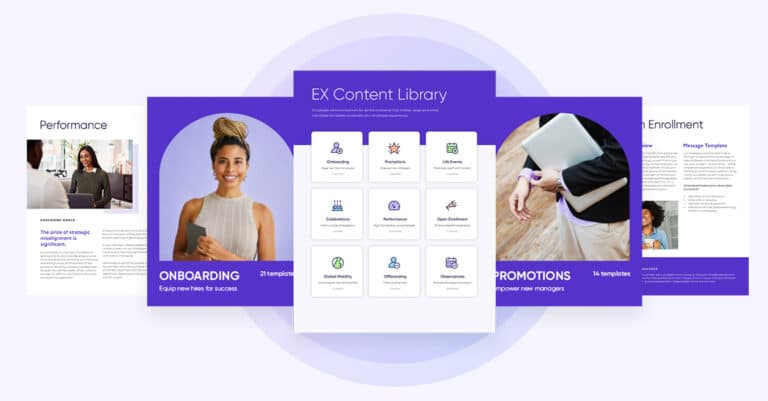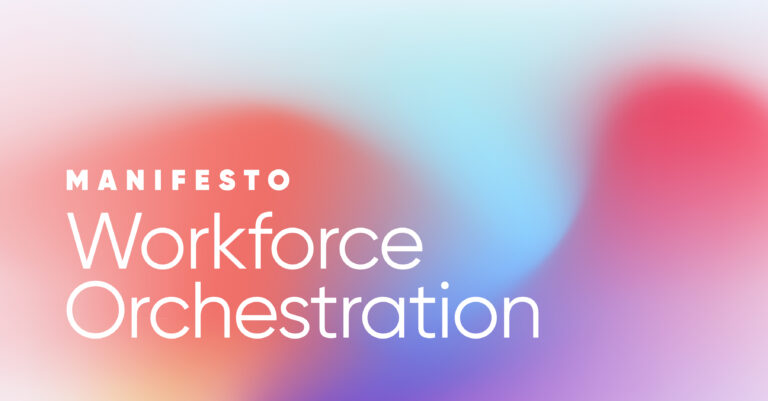You’ve heard it before. Most leaders explaining their leadership style will say they have an open door policy, but is the door really open? Open door policies refer to the practice of leaders physically or metaphorically leaving their office doors “open” so that employees always have access to transparent, two-way communication.
While leaders will often say they believe in an open-door policy, a recent survey commissioned by Firstup, the leader in digital employee experience, discovered employees might not see a true “open door” and want more leadership access and improved decision-making transparency.
The study surveyed 23,105 global respondents from the UK, United States, Germany, Nordic countries and Benelux, and the respondents were 50% desk-based and 50% deskless.
In the study, 38.3% of respondents said they wanted their employer to create a better line of communication between executives and employees.
Employees are also asking for a greater understanding of enterprise-wide decisions. 31% of respondents asked for improvement of transparency across the enterprise, with visibility into company decisions and direction.
In large organizations with employees working remotely across the globe, it can be hard to offer an open-door policy that gives employees access to leaders and the information they need to feel connected. So how can a communications team help better connect leaders and employees?
Create a digital CEO/leader channel
Utilize a digital platform to provide two-way communication between leaders and employees. Providing digital access will help employees feel better connected, no matter where they are located. It will also give them access to corporate updates and decisions being made at the executive level.
Marc Bitzer, Whirlpool’s CEO, frequently shares video updates to the 93,000 plus employees at Whirlpool via their Firstup program, WHR 360. On his channel, “Marc’s Whirled,” he collects employees’ questions and then creates iPhone videos sharing updates and answers. These videos provide access to Marc – placing his voice into Whirlpool’s employees’ hands. Marc’s videos have garnered fantastic engagement on the platform and have made a difference with transparency and decision-making. Employees now have a broader context of the entire company, allowing them to make better decisions in their respective work environments.
Provide an opportunity for employees to ask questions
Whether it’s through a digital platform or town hall Q&A opportunities, provide a forum for employees to ask leaders questions. Making it anonymous can also help employees feel more comfortable submitting their questions. Consider an “Ask Me Anything” survey that is always open and available for employees to ask questions.
Use video. Often.
Videos are king right now. Videos are often the most engaging content in marketing and internal communications. In fact, executive videos on the Firstup platform generate 4x the unique views than general content does. Plus, videos help better connect remote employees since it includes important nonverbal communication and accesses leadership’s authentic thoughts, decisions, and even personal office spaces. Doing something as simple as showing a leader’s home office can make them appear more authentic and accessible.
13 key statistics on mobile video for employee engagement
One common misconception about videos is that you need a teleprompter, a professional camera, and lighting to create a leader video. This can be timely, expensive and, not worth the effort. Authentic, raw videos filmed on a smartphone perform just as well as a produced one (or better). Employees are not looking for award-winning documentaries. Everyone is used to iPhone videos on their social media!
Leaders can do a weekly or monthly short video (three minutes less) where they answer employee questions. This helps give open door access and provides insights into organization decisions. These authentic, easy-to-produce videos will go a long way in explaining decisions and opening the door to the leader.
Wondering what you should talk about in your weekly video? Here are some ideas:
- Recognize employees or a recent completion of a project.
- Share customer success stories.
- Share your wellness/work-life integration tips.
- Explain how a decision was made.
- Communicate quarterly results.
- Provide a business or project update.
- Share updates to a current change, even if you don’t have all the answers.
- Share your experience at a recent external event.
- Provide your personal reflection on a relevant topic (i.e. upcoming holiday, inclusion & diversity).
- Share your reading recommendations – “what’s on your bookshelf.”
Communicate more frequently
Oftentimes, leaders wait to communicate updates and changes until they have all the information to avoid confusion or information overload. These infrequent communications have the reverse impact When there is a void of communication, employees make up theories on what they think is happening and, most of the time, the theories are filled with worry.
It is better for leaders to say they don’t know and let employees know they are still figuring out the next steps – but will communicate updates soon.
Hyper-personalized comms for every employee
Participate in the conversation
If your company utilizes a digital communications platform to communicate with employees, leaders should get in on the conversation. Make sure they are engaging with content and posts that employees are sharing. This shows they care about what is happening in all departments and locations of the organization.
At Firstup, we always like to say “take 5, to make 5.” Leaders should spend five minutes a day, making 5 interactions with content. Perhaps they like a colleague’s post, share an interesting leadership article, congratulate someone on their work anniversary, and like a story that includes product updates. When leaders engage in everyday employee conversations, it definitely makes them more accessible and approachable.
As the study revealed, employees are yearning for access to their executives to ask questions and gain insight into company decisions. Oftentimes, leaders or corporate communications teams wait for a major announcement and then overproduce an email or video that is a one-way communication to employees. Corporate communicators need to help evolve this thinking and give more access to leaders that is digital, frequent, authentic, and accessible, connecting employees and leaders no matter their locations.
Learn the 5 steps you can take at your organization to increase engagement and improve communication satisfaction, regardless of the location of your employees:
Download PDF









